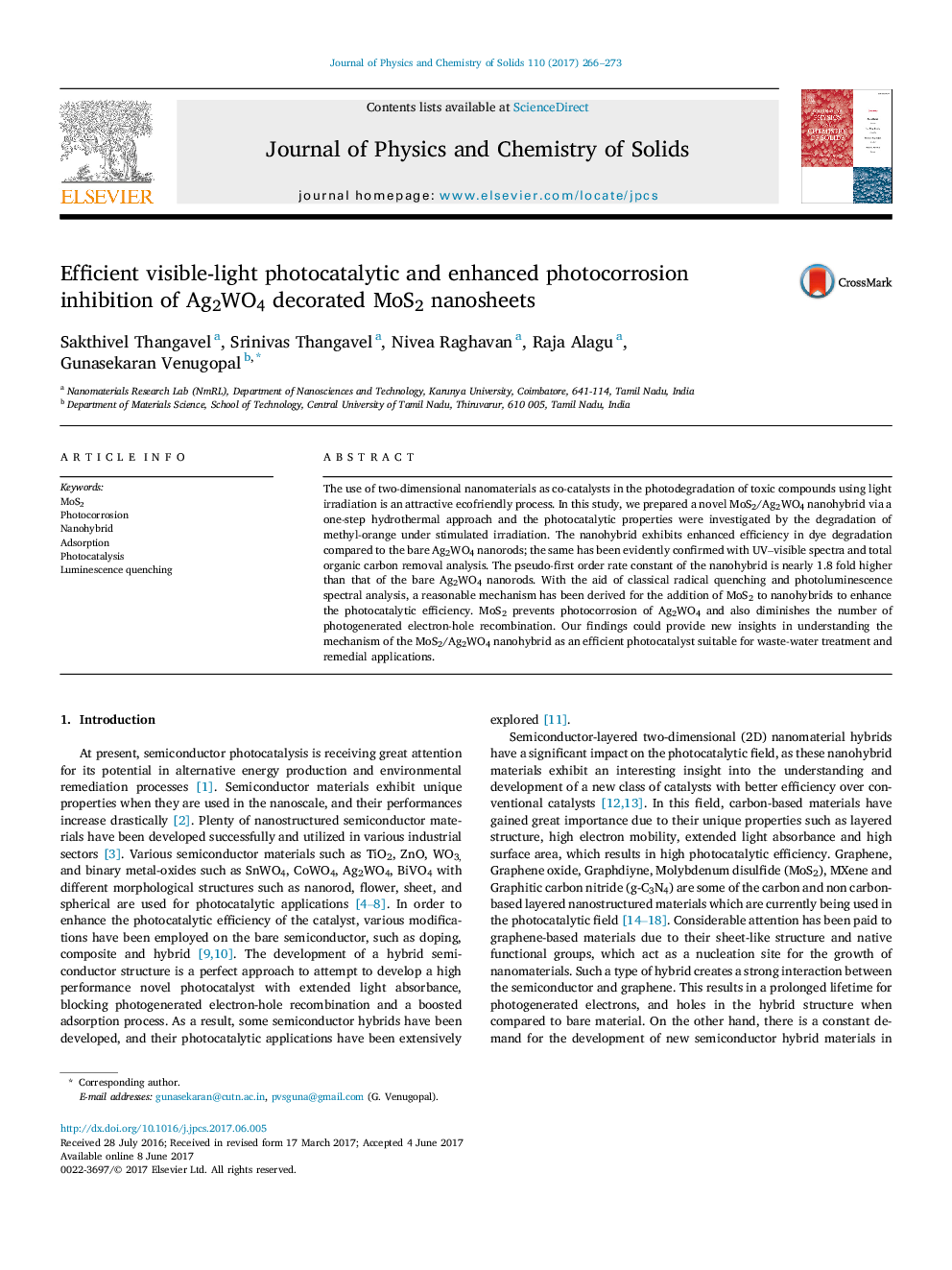| Article ID | Journal | Published Year | Pages | File Type |
|---|---|---|---|---|
| 5447232 | Journal of Physics and Chemistry of Solids | 2017 | 8 Pages |
â¢A nanostructured MoS2-decorated Ag2WO4 nanohybrid was prepared via a hydrothermal technique.â¢MoS2-decorated Ag2WO4 nanohybrid exhibits superior photocatalytic activity.â¢The nanohybrid exhibits enhanced efficiency in dye degradation compared to bare Ag2WO4.â¢MoS2 nanosheets prevent photocorrosion of Ag2WO4 and reduce electron-hole recombination.â¢The radical species were examined using radical detection and photo-current measurements.
The use of two-dimensional nanomaterials as co-catalysts in the photodegradation of toxic compounds using light irradiation is an attractive ecofriendly process. In this study, we prepared a novel MoS2/Ag2WO4 nanohybrid via a one-step hydrothermal approach and the photocatalytic properties were investigated by the degradation of methyl-orange under stimulated irradiation. The nanohybrid exhibits enhanced efficiency in dye degradation compared to the bare Ag2WO4 nanorods; the same has been evidently confirmed with UV-visible spectra and total organic carbon removal analysis. The pseudo-first order rate constant of the nanohybrid is nearly 1.8 fold higher than that of the bare Ag2WO4 nanorods. With the aid of classical radical quenching and photoluminescence spectral analysis, a reasonable mechanism has been derived for the addition of MoS2 to nanohybrids to enhance the photocatalytic efficiency. MoS2 prevents photocorrosion of Ag2WO4 and also diminishes the number of photogenerated electron-hole recombination. Our findings could provide new insights in understanding the mechanism of the MoS2/Ag2WO4 nanohybrid as an efficient photocatalyst suitable for waste-water treatment and remedial applications.
Graphical abstractSchematic representation of MoS2- AgWO4 nanohybrid photocatalysis.Download high-res image (160KB)Download full-size image
